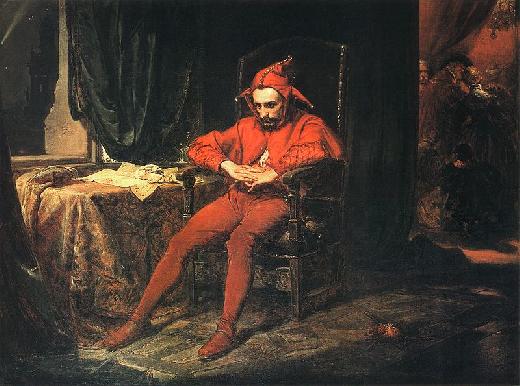 In case you missed my first posting with the questions, you can catch-up by following this link . Debbie G (moderator of the Yahoo Group, Polish Geniuses) sent me some answers — first a reminder of the questions I am researching …
In case you missed my first posting with the questions, you can catch-up by following this link . Debbie G (moderator of the Yahoo Group, Polish Geniuses) sent me some answers — first a reminder of the questions I am researching …
Research Questions
- Was the column labeled ‘Numerus Domus‘ in the Latin Box format of church records required by the Codex Napoleon?
- When did house numbers get assigned?
- How were numbers assigned? Did they number starting from the church (I have had that said to me.)? Did they give the lowest numbers to the “most important” members of the parish? Were houses assigned numbers in the order they were built without regard to their sequential location to another house or did they start at 1 and proceed down the street numbering each house, such that consecutive house numbers are next door neighbors?
- Were house numbers unique to a single village or to the parish they all belonged?
- Why did they stop collecting house numbers in the church records?
- Did house numbers get renumbered (if so then when)? I am thinking like, in Detroit around 1920 when many/most homes were renumbered.
- If the houses were not renumbered, then is it possible to visit the same house (assuming it still stands) and know it was that house where so-and-so lived?
Answers …
#2 … I have seen house numbers on records as old as late-1600s [Stanczyk: so this way pre-dates Napoleon and as such also answers #1; In Biechow, prior to Latin Box format, circa 1797 no record of a house # exists].
#3 House numbers were assigned starting with the church and moving outwards OR starting with the first house that was built and numbering each house built after that in sequence. This means you would/will find house # 245 across the street from house #1, and next door to house #59 on one side and house #75 on the other. This type of house numbering system makes it impossible to locate a particular house. Homes and buildings in cities are numbered sequentially however. [Stanczyk: Pity. This precludes me from analyzing next door neighbors by using the house numbers.]
#4 House numbers are unique to the individual village.
#5 “They” did not stop collecting house numbers in the church records. This continues today. [Stanczyk: I meant in the church records. But I think Debbie means yes. Just not in Biechow it seems.]
#6 The only time houses/property were renumbered is if the house burned down. Then the house rebuilt on that same property was numbered sequentially after the last house built. Example: if the number of the last house built in a village was #364, and house # 34 burned down, then when that house is rebuilt it is numbered 365. [Stanczyk: Perhaps, knowing that larger numbers are newer homes will yields some insight.]
#7 In villages where the houses were numbered as they were built, it is almost impossible to locate a particular house unless it is a very small village. If any or all of the village burned down at any time, the process becomes even more impossible (if that can be). [Stanczyk: Debbie went on to crush my hopes of locating a family homestead by various reasons on why the house #’s may be different or non-existent].
Thank You Debbie G. for sharing your expertise!
More Answers …
I have verified that Biechow does not have house #’s in the church records prior to 1797 — probably as a result of Austrian partition regulations. In MF# 936660, I found when Fr. Dominicus Cyranski arrives he starts using what I believe are house #’s (i.e. Sub. No 27). These 1797 Church records are in Latin Paragraph format. The house numbers also appear in MF # 936665 (the Latin Box format) beginning in 1797.
Again let me remind the readers that Biechow (and Pacanow, Swiniary, etc.) are rural so they will do things differently than larger towns or cities. Oddly, I went through MF # 936662 and for the years 1836-1848 there were no house numbers. But in 1849, the records (which were in Polish paragraph / Napoleonic form), the house numbers make a come back. So I have house numbers in 1849-1852 inclusive. In 1853, they stop again. Now there was an explanation, it appears to be by priest sentiment. In 1848, Father (Fr.) Jozef Stanky [the priest who writes likes a chicken] takes over. In 1849 he adds house numbers back. In 1852 Fr. Michal Krolikowski shares duties with Fr. Stanky. In 1853 Fr. Michal Krolikowski [priest with the angel like handwriting] decides to stop recording house numbers. So it appears to be specific to the whims of the parish priest.
Also when I was posting about Old Tomasz Leszczynski‘s first wife Julianna Kordos‘ brith record, I put an image of her Latin Box church record from 1833 (Swiniary parish) and I noticed it had house #’s (hers was house #40). So the variation can be by priest within a parish or variable by different/adjoining parishes. I think that explains why Debbie G. see one thing and I see another. I am guessing that it differs by partition too (Austrian vs. Russian vs. Prussian). I think it is the differences and freak happenstances that make genealogical research so interesting (and/or frustrating).
I do accept the fact that house numbers exist in a village, irrespective of whether they exist in the church records for that village. Stanczyk is NOT thick skulled!



Tell Me Your Thoughts ...